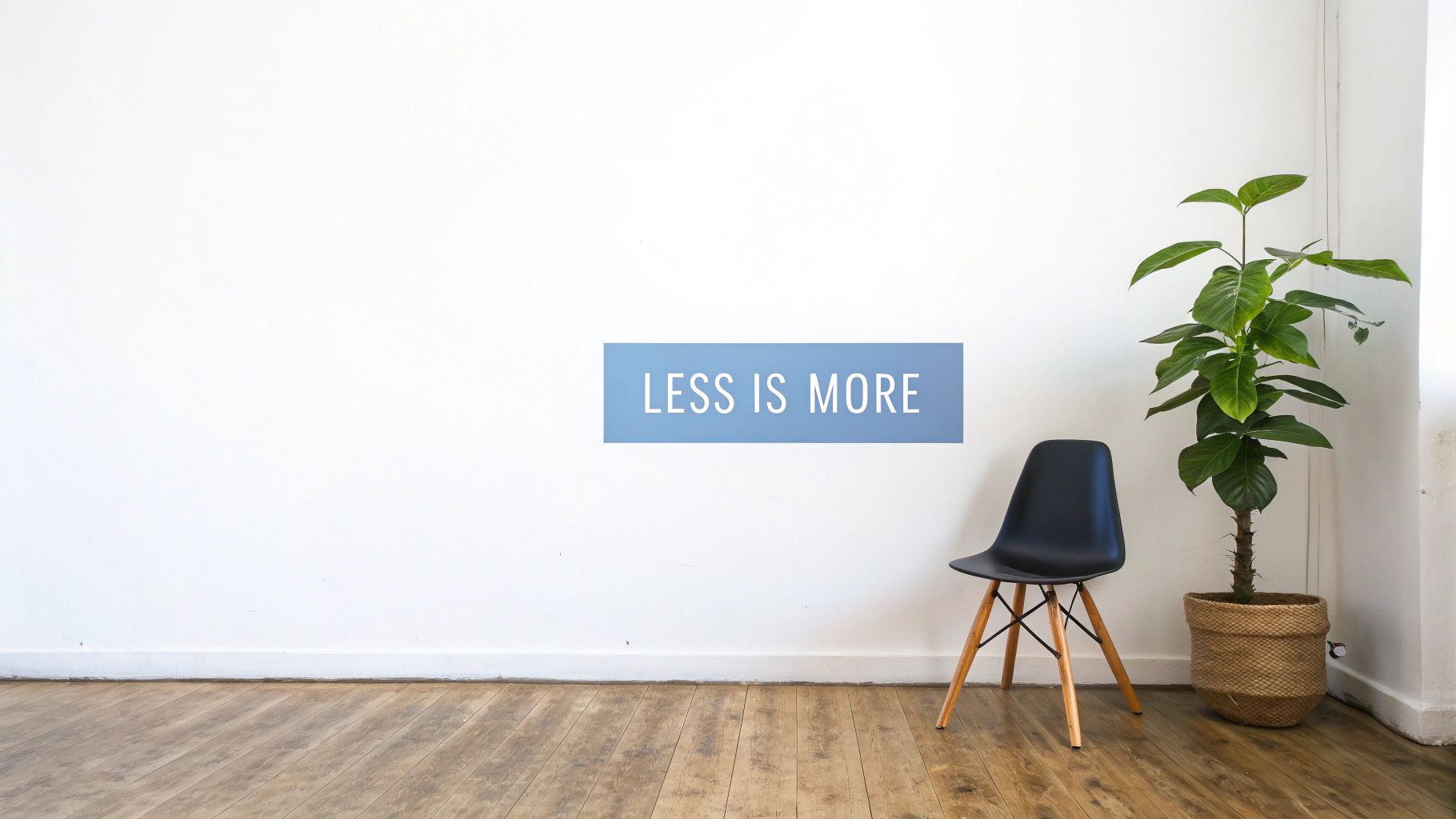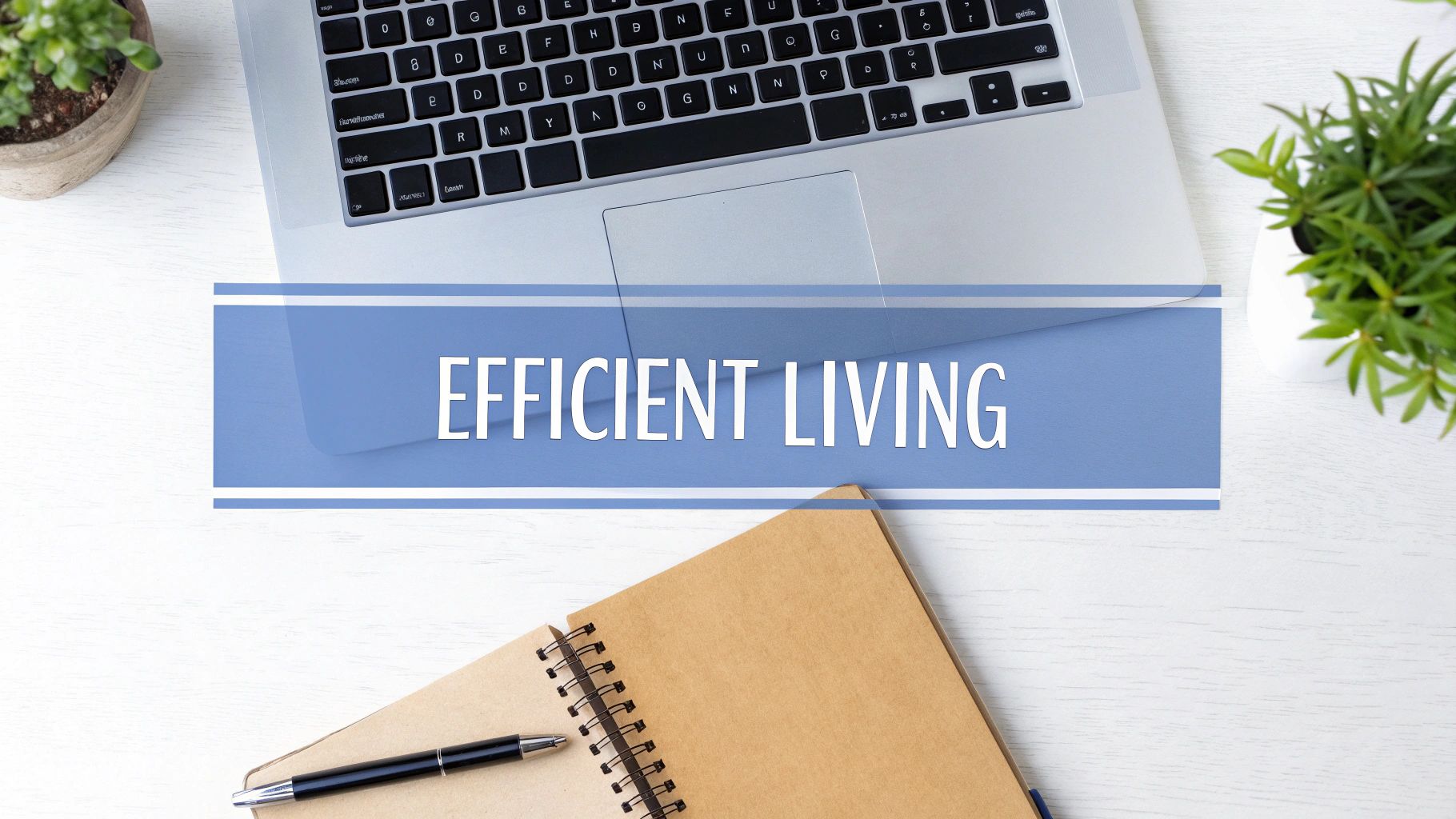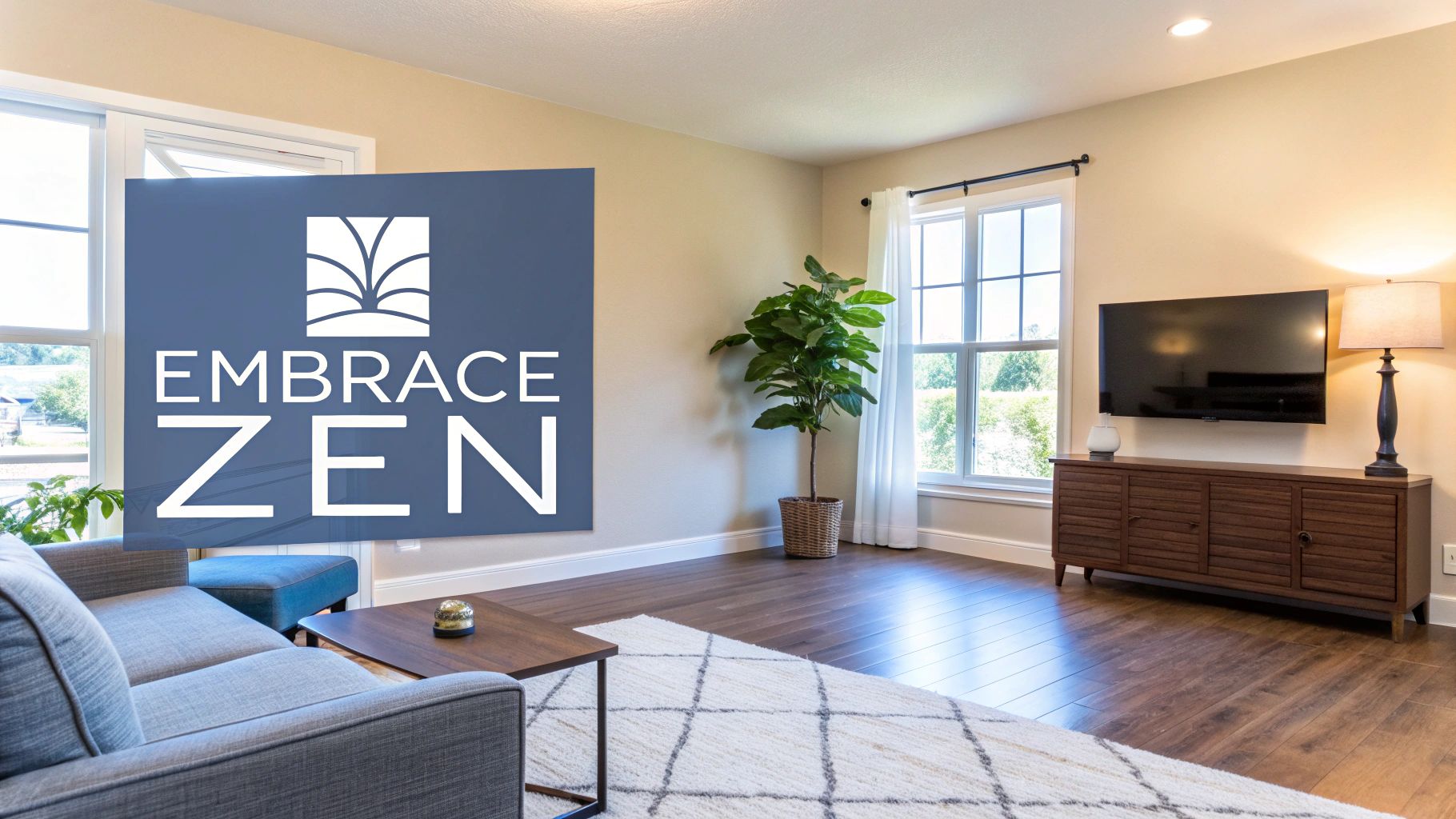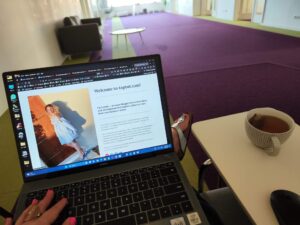More people are embracing minimalism as a way to focus on what truly matters in life. This movement emphasizes intentional living and moves away from excess consumption. When removing clutter and distractions, minimalism helps create calm and clarity in our busy lives. But what does modern minimalism really look like in practice?
Defining Modern Minimalism

Modern minimalism is about more than just getting rid of stuff. It’s about creating space for what adds real value to your life, whether that’s relationships, experiences, or personal growth. Everyone’s minimalist journey looks different – you might start with decluttering your closet or simplifying your digital life. The key is finding an approach that works for you. Want to get started?
Check out How to Start with Minimalism.
The Growing Appeal of Minimalism
The numbers tell an interesting story about minimalism’s rising popularity. A CivicScience study found that while only 10% of Americans currently identify as minimalists, 25% are actively working toward or interested in adopting a minimalist lifestyle. Get more details here. This growing interest has sparked many helpful resources, including books on minimalism that guide people toward simpler living.
Minimalism Across Generations
Minimalism appeals to people of all ages, though their reasons may differ. Many millennials embrace it to cope with financial pressures and prioritize experiences over things. For older generations, minimalism often connects with downsizing or finding peace in retirement. This broad appeal shows how minimalist ideas can help anyone create a more meaningful life. Books about minimalism have become valuable guides for people at every stage of this journey.
The Revolution in Minimalism Literature

Books about minimalism have seen incredible growth as more people seek to simplify their lives. These books serve as guides for those wanting to live with less and find more meaning. They go beyond basic decluttering advice to explore the deeper emotional benefits of owning less and living intentionally.
The Impact of Minimalism Books
These thoughtful guides are changing how we think about personal growth. They provide clear steps for decluttering spaces while helping readers develop a simpler mindset. By reading these books, you’ll learn practical ways to organize your home and align your life with what matters most. Want to get started? Check out: How to start minimalism.
Key Elements of Successful Minimalism Books
The best minimalism books share some common traits. They tell engaging personal stories, give clear action steps, and feel like advice from a trusted friend. Rather than just listing decluttering tips, they explore how living with less can boost happiness and reduce stress. Many authors share their own journey to show how minimalism improved their wellbeing.
The Growing Market for Self-Help and Minimalism
Self-help books, including those about minimalism, have seen major growth recently. According to NPD data, self-help book sales grew at an 11% yearly rate over six years, reaching 18.6 million books sold in 2019. Books focused on motivation jumped from 1.4 million sales in 2013 to 4.3 million in 2019. See the full report here. These numbers show how many people want guidance on living more simply and purposefully.
Breaking Down Bestselling Minimalism Books
Ever wonder why some minimalism books fly off the shelves while others collect dust? Let’s explore what makes certain books resonate deeply with readers and create real impact in their lives.
Balancing Practical Advice With Compelling Narratives
The best minimalism books are like having a good friend guide you through decluttering. They give clear, actionable steps while sharing personal stories that make you feel connected and inspired. Think of learning a new recipe – you want the exact measurements, but hearing about the chef’s journey and passion makes you excited to start cooking. The books that nail this balance tend to have the biggest impact.
Building Community and Engagement
Great authors know that a book is just the beginning of the conversation. They create spaces – whether online groups, social media communities, or local meetups – where readers can share wins, ask questions, and support each other. This turns readers into an engaged community and the book into an ongoing resource rather than a one-time read.
The More of Less: A Case Study in Success
Take Joshua Becker’s The More of Less: Finding the Life You Want Under Everything You Own. The numbers tell an amazing story: 10,000 copies sold in week one, another 2,000 in week two, reaching 15,000 sales in just 20 days. The book hit major bestseller lists like USA Today and Publisher’s Weekly. Check out the full stats here. This success came from both solid content and Becker’s deep connection with his reader community.
Positioning and Promotion: Keys to Visibility
Smart positioning helps great books find their readers. Everything from the cover design to the marketing needs to clearly show how the book will help people simplify their lives. Authors who nail their message and connect with the right audience through targeted outreach see their books thrive. A good plan gets the book into the hands of people who will benefit most from its message.
The Research-Backed Benefits of Minimalist Living

When you think of minimalism, you might picture clean countertops and capsule wardrobes. But the benefits of living with less go far deeper than just having a tidy home. Research shows that embracing minimalism can boost your happiness, reduce stress, and help you live more meaningfully.
Decluttering Your Mind: The Mental Benefits
Your physical space and mental state are closely connected. Consider this – working in a cluttered office versus a tidy one makes a real difference in how well you can focus. A messy desk pulls your attention in multiple directions, while a clean workspace helps you concentrate on what matters.
The simple act of clearing your space creates room in your mind too. When you let go of excess stuff, you free up mental energy that was tied to managing all those possessions. You might be interested in: 12 Universal Benefits of Minimalism.
Research backs this up – people who practice minimalism report feeling calmer and more focused. By removing physical clutter, you naturally reduce mental clutter too. This helps you stay present and engaged in your daily life instead of feeling overwhelmed.
Minimalism and Enhanced Wellbeing
Studies published by researchers show minimalism’s positive effects on mental health: less anxiety, reduced stress, and greater life satisfaction. When you simplify your surroundings and clear away distractions, your mind naturally feels lighter. Learn more about minimalist living here. Having fewer material possessions allows you to focus on what brings real meaning to your life.
Productivity and Intentional Living
Minimalism gives your productivity a boost too. With fewer distractions competing for your attention, you can channel your energy into what matters most. This focused approach helps you get more done, both at work and in your personal life. Most importantly, minimalism teaches you to be intentional about what you allow into your life – from objects to commitments to relationships.
Selecting Your Perfect Minimalism Guide

Looking for the right minimalism book can feel overwhelming with so many options available today. Let me help you find the perfect guide to support your minimalism journey in a way that works for you.
Assessing Your Minimalism Goals
Take a moment to reflect on what you want to simplify in your life. Do you need help decluttering your home? Managing digital distractions? Making bigger lifestyle changes? Being clear about your needs will help you pick the right resource. For example, if technology overload is your main challenge, start with a book focused on digital minimalism.
Evaluating Author Expertise and Content Quality
Look for authors who walk the talk and share practical, tested advice from real experience. Read reviews to get a sense of how helpful others found the book. The best minimalism guides offer clear action steps you can implement, not just theory. Make sure the author’s approach resonates with your values and lifestyle.
Matching The Book to Your Needs
Every minimalism book has its own focus – some guide you through decluttering, others explore financial minimalism, and some take a broader life philosophy approach. Think about what kind of support would help you most right now. Do you prefer step-by-step instructions or inspiring stories? Choose a book that matches how you learn best.
Comparing Minimalism Philosophies and Methodologies
Different minimalism guides promote different approaches. Some advocate radical decluttering while others focus more on mindful choices. Two popular methods are the KonMari Method, which suggests keeping items that “spark joy” (learn more in our article about How to master the KonMari Method), and essentialism, which helps you focus on what matters most.
Avoiding Common Pitfalls in Book Selection
Be wary of books promising overnight transformations or rigid rules. Good minimalism guides encourage you to find your own path and develop habits that work for your life. Skip books that make you feel guilty or pressured. Look for ones that inspire and empower you to create positive changes at your own pace.
Turning Minimalist Principles into Daily Practice
Reading minimalism books can be inspiring, but making real change requires thoughtful action. Let’s explore practical ways to transform minimalist concepts into meaningful daily habits that last.
From Book Knowledge to Real-World Action
Just like learning to ride a bike, reading about minimalism helps – but the real learning happens when you start practicing. Here’s how to begin your minimalist journey:

- Start Small: Choose one area like a drawer or inbox to declutter. Build confidence through small wins. For example, unsubscribe from 5 email lists today.
- Know Your Why: Get clear on what you want from minimalism – more time, less stress, mental clarity? Having strong reasons keeps you going.
- Make It Your Own: While books offer great guidance, create an approach that fits your life. You might enjoy: How to enjoy social media while being a minimalist.
Building Sustainable Minimalist Habits
Making minimalism stick is about creating lasting habits that work for you:
- Regular Reset: Schedule quick 15-minute decluttering sessions weekly. Small, consistent actions prevent overwhelm.
- One In, One Out: When you buy something new, remove a similar item. This keeps your space balanced.
- Buy With Purpose: Before purchases, ask if items truly matter to you. This helps avoid impulse buys.
Overcoming Challenges and Staying Motivated
It’s normal to feel stuck sometimes. Here’s how to stay on track:
- Remember Your Goals: Think about why you started – to reduce stress, gain freedom, improve focus.
- Find Your People: Connect with others practicing minimalism through online groups and local meetups.
- Celebrate Progress: Notice and appreciate your wins, even small ones. This builds momentum.
By applying these practical tips daily, you can turn minimalist ideas into real lifestyle changes. The goal isn’t just a tidy home – it’s creating space for what matters most.
Ready to simplify your life? Lorelei Web offers guidance to help declutter your spaces, improve your routines, and live with greater purpose. Visit today to start your journey to simpler living.

Lorelei has been an online entrepreneur, marketer and writer since 2006. Her biggest passion is WordPress, which is why she switched to being a full-time blogger 20 years ago and hasn’t looked back since. With so many years of experience behind her, she is an expert in copywriting, SEO, marketing and business strategies.






